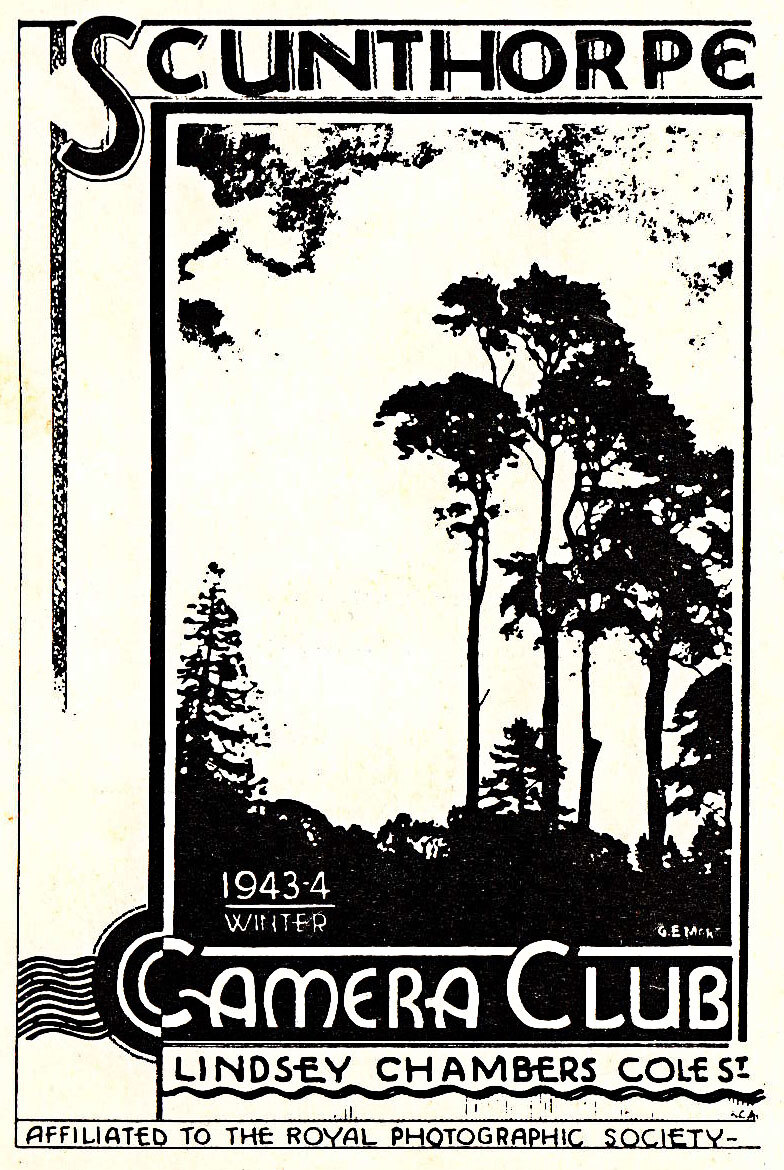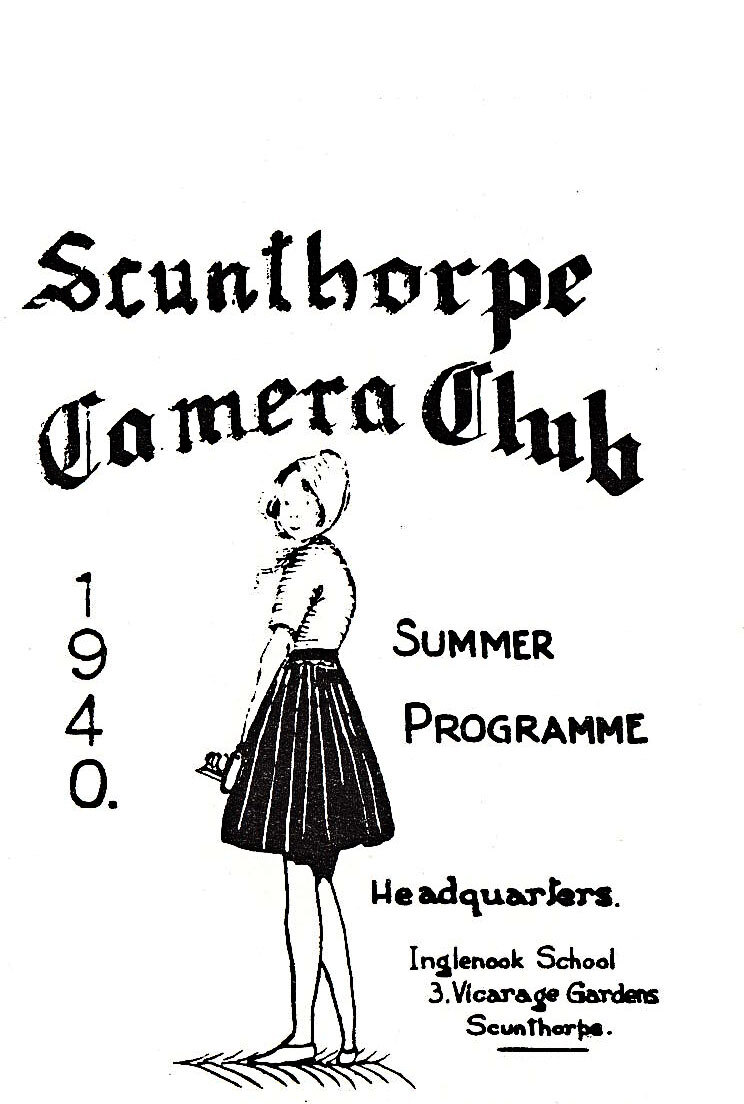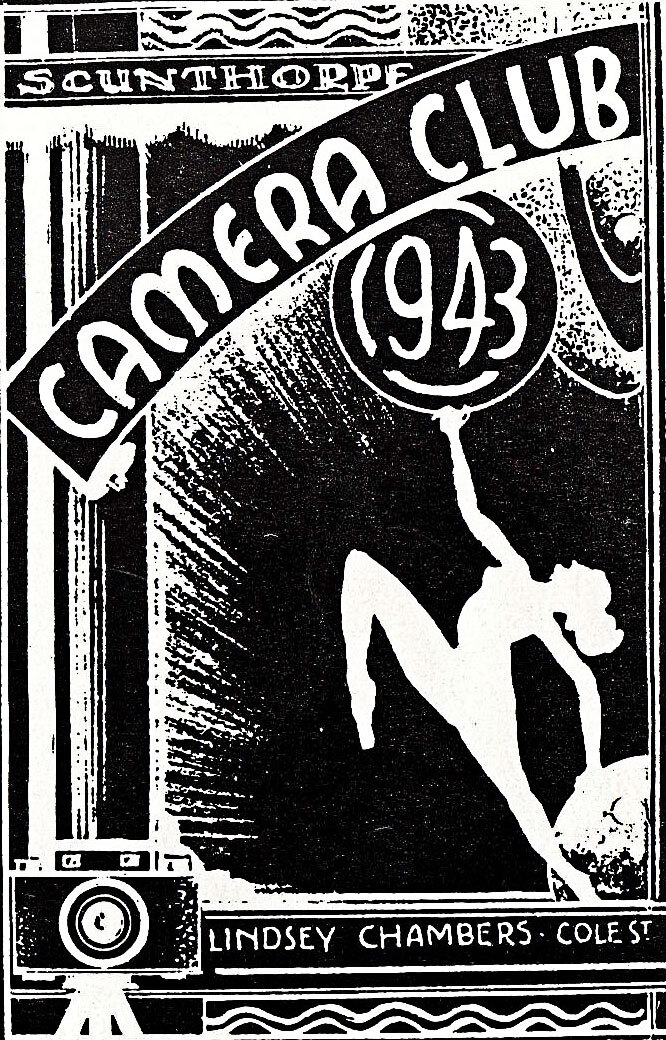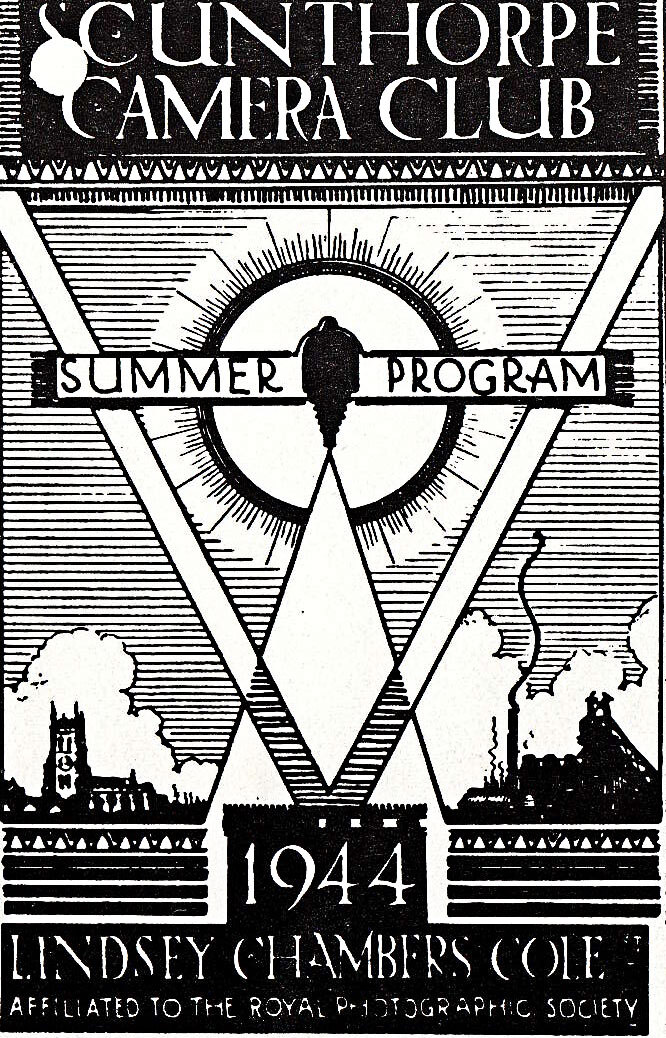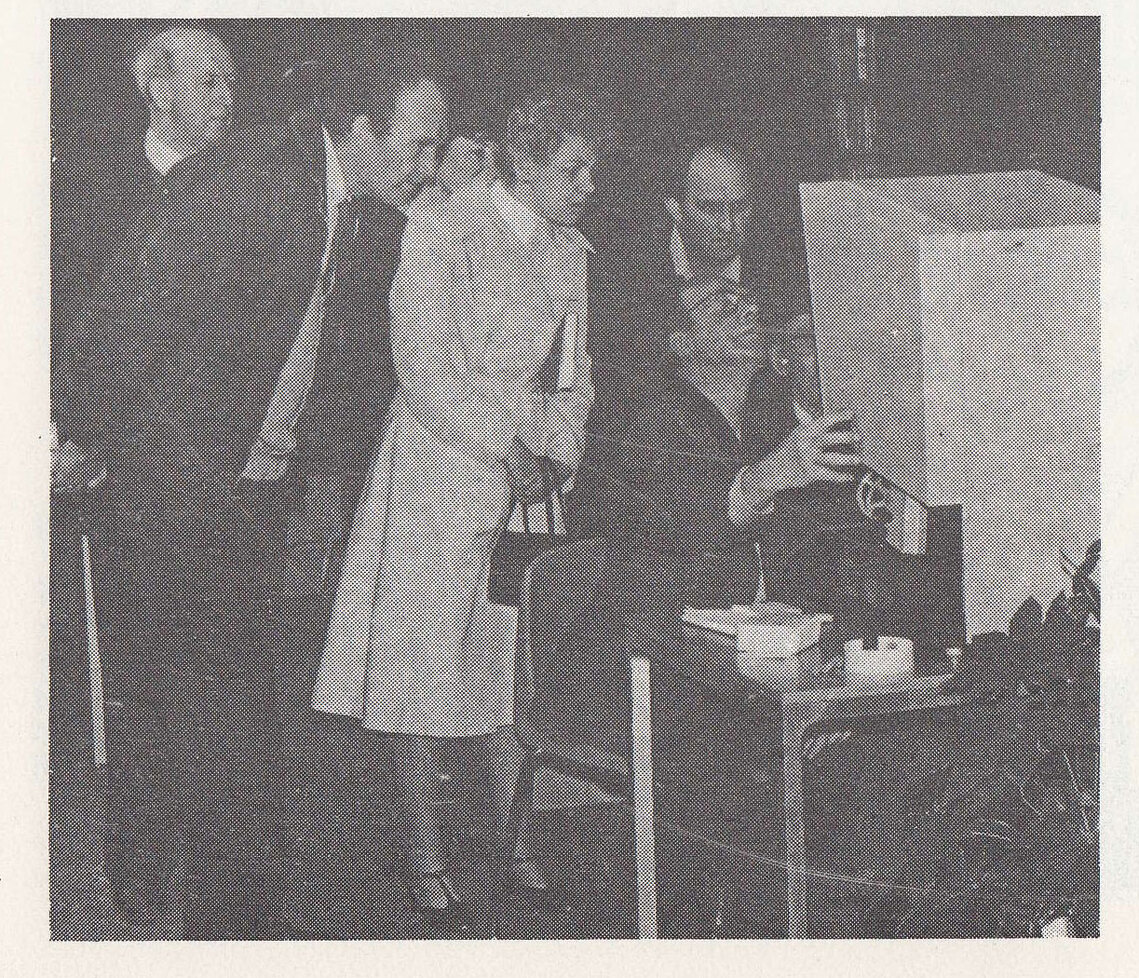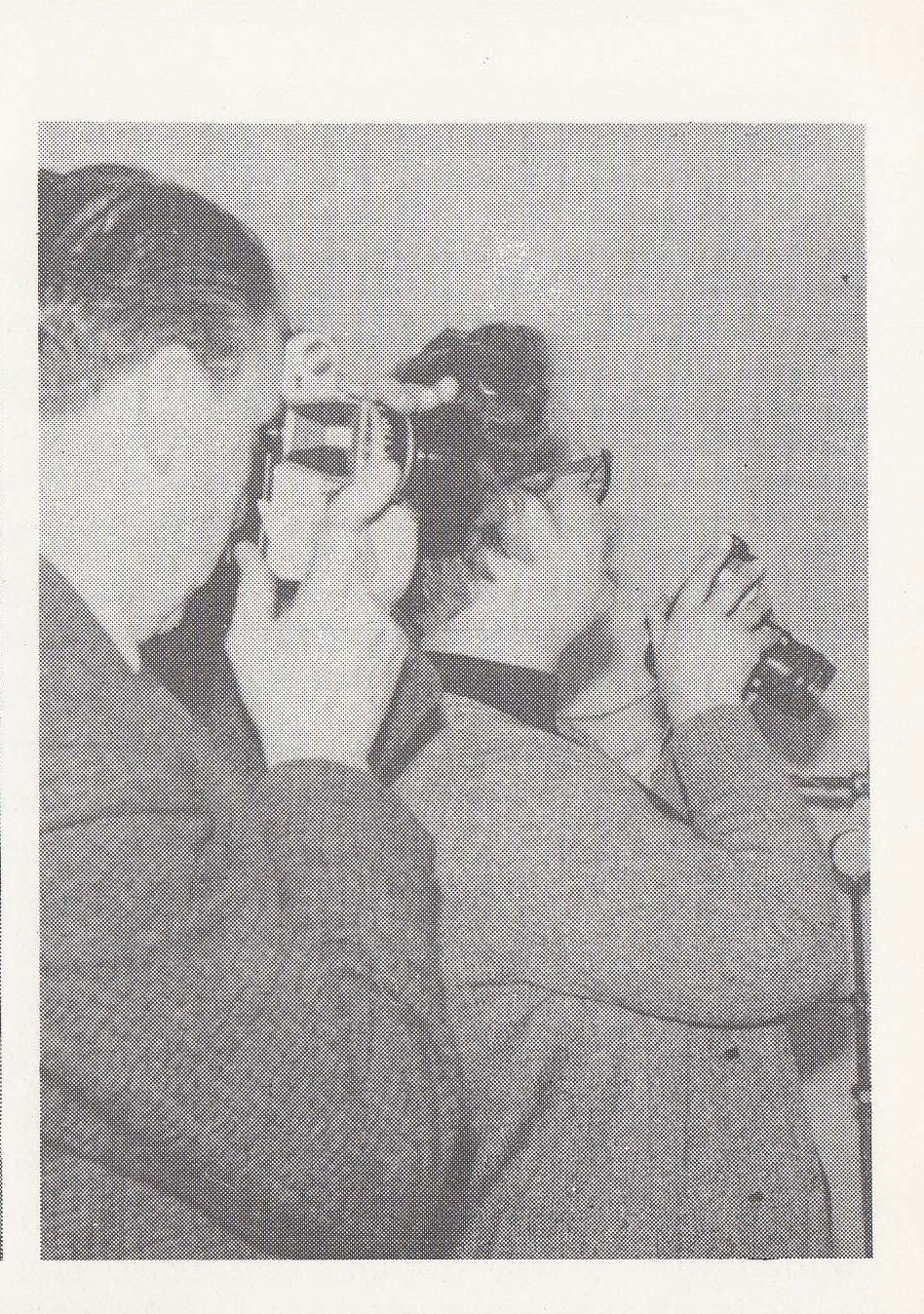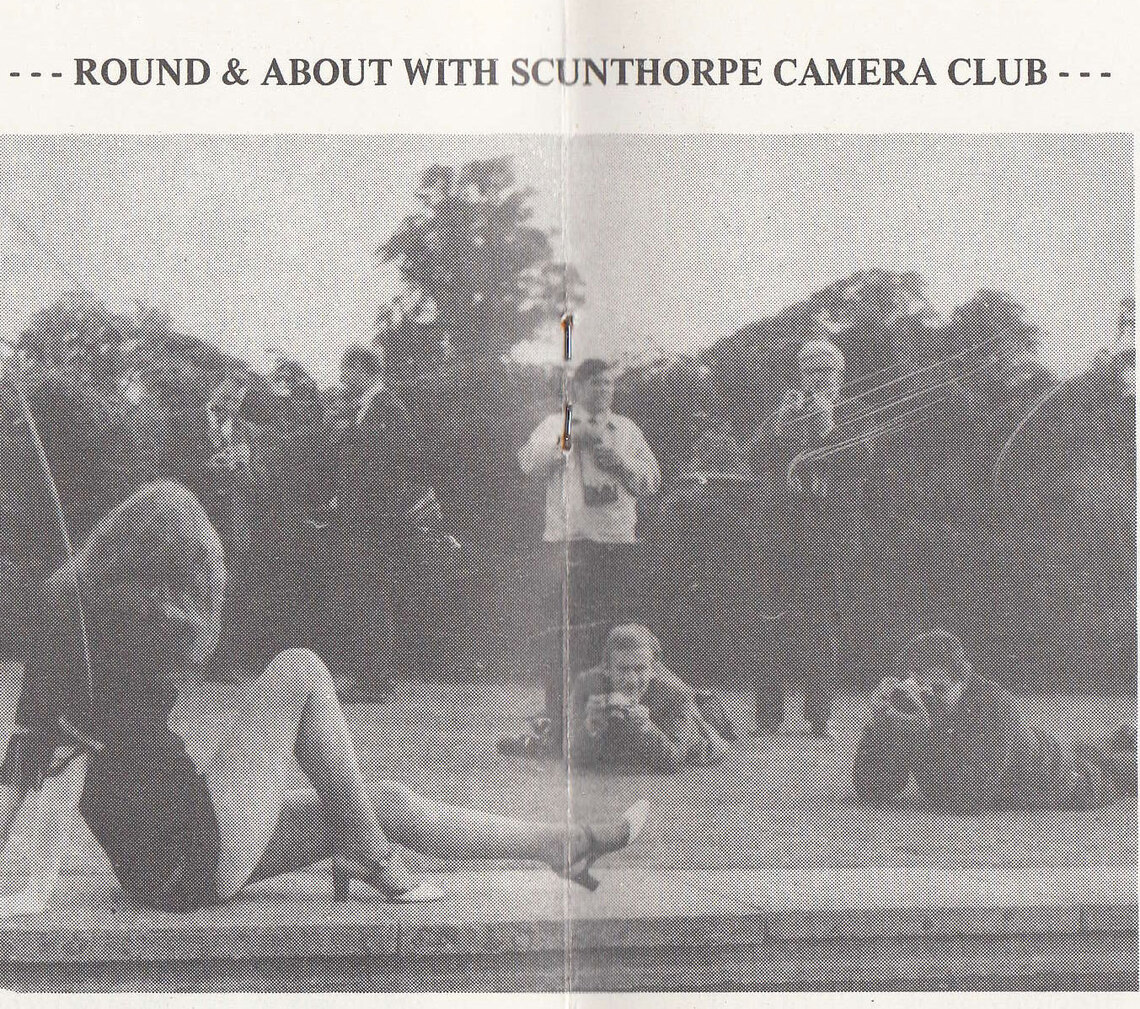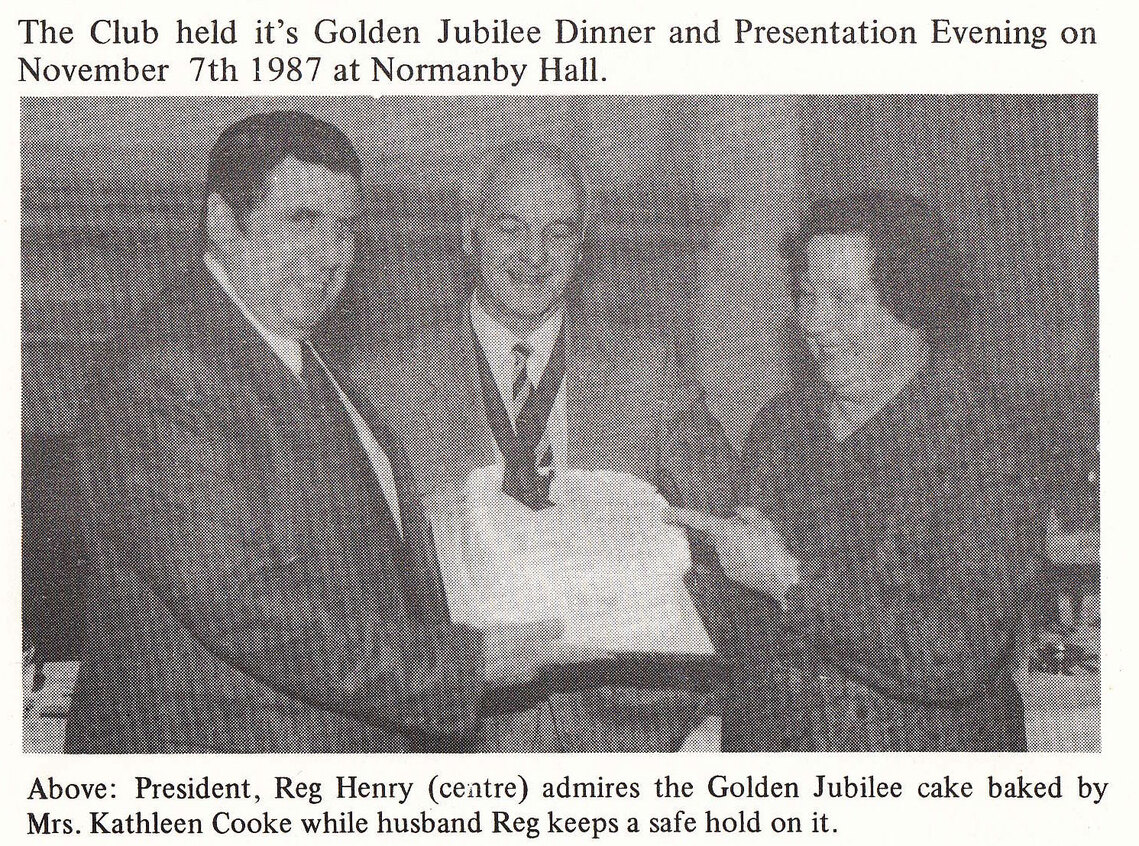The Scunthorpe Camera Club was inaugurated on 6th December 1937.
On 7th Jan 1939 the first Annual General Meeting was held, at Inglenook School Vicarage Gardens, the Club's first meeting place. The chairman on the night was Mr A Wrigley, who had called the inaugural meeting. He reported as follows 'good progress had been made, particularly in view of the obstacles that had to be surmounted in the first year of the club's inception'. At this meeting club rules, having been drawn up by the committee, were discussed and adopted. The committee were elected as follows: Messrs Howard (Chairman), Mart, Barker, Butler, Blythe, Gillespie, Wrigley and Taylor.
The portfolios were a strong feature during the early days, as were competitions. Competition entries were judged by fellow members and not by a judge as is now the case. Entry fees were paid and cash prizes awarded. Competitions were on set subjects. As well as competitions rambles were a very popular feature of club life, but they fell out of favour towards the end of 1941.
By 1940 wartime conditions were having their effect on club activities and a lecture to have been given on composition by Mr F Taylor on the evening of November 21st of that year had to be cancelled due to an air raid warning at 7.15pm. In fact the question of whether or not to carry on with club activities during the war was raised. However at a general meeting on April 9th 1940 it was agreed to continue. At this time meetings were held monthly, on Tuesday evenings during the summer and on Saturday afternoons during the winter. The wartime spirit of comradeship was evident within the camera club, and members fortunate enough to obtain photographic materials would share them with those less fortunate.
1941 was to see several big events in the club's short history. The decision was taken to become affiliated to the Royal Photographic Society and the Yorkshire Photographic Union. Mr AH Sanders {Sandy], a local press photographer who could be seen riding his bicycle round the district on his way to assignments, was to vacate his studio. Being a club official he offered his rooms, situated in Lindsey Chambers, for use by the Camera Club. The rental to be 7/6d (37 .5p) per week inclusive for light, heating and rates.. With the move to Lindsey Chamber it was decided hold the meetings on a weekly basis. Outside lecturers started to visit the club, those being sponsored by members of the photographic trade. Contact with made with the Lincoln Camera Club and an exchange of portfolios was arranged.
During the next few years many of the club's rules that apply today, were made. For example it was decided at the 4th AGM on October 11th 1941 that 'the annual subscription rates for the ensuing club year should be decided at each AGM'. The subscriptions for 1942 was set at 15/- (75p), By now there was a move towards using independent judges for competitions rather than results being decided by club members on a points basis. Membership at this time had risen to 25 but members were urged to try and recruit new members.
By the end of 1944 the club had acquired additional items for its dark room and much work was done to give members the best possible facilities. As the war drew to a close doubts were expressed as to whether the existing club room would be big enough as membership was expected to increase to between 50 - 60 after the war.
1945, and the club had it's first chance to show some of its work to the general pubis, enquires had been received from the Library and Museum with a view to displaying prints for the public to view. Three prints were to be hung in the reference room at the Library., and one print in the main Library. A display of prints would be hung at the Museum. At the time the Museum was housed in what was the Old Cottage Hospital in Cottage Beck Road. A building that was to play a part in the club's history some years later. During 1945 it was decided to start a club library. A cupboard formally used by firewatchers, who used the club room, was obtained and members provided books for reference. Mr Launce Barker was the first Librarian. During April of 1946 the Scunthorpe Arts and Craft Exhibition was re- introduced and the club was invited to hold an exhibition. Eric Mart was to be responsible for the club's contribution to the exhibition. Mr H Bryce-Thompson RPS of Leeds was invited to judge the entries and also to mount a one man exhibition of his own work. Meanwhile the club continued to display prints in the Library and Museum, these being changed at regular intervals.
As club activities grew it was decide that a programme secretary was required and at the 10th AGM in 1947, Mr Lance Barker was duly elected.
By 1947 a beginners section was introduced to competitions, for those members new to the hobby.
The club had to move to a new meeting place in 1948. Lindsey Chambers was required by the landlord, Mr W Bee, for his own use, After enquiries were made to the Borough Council, the club was offered accommodations in the public library in the High Street. Surplus equipment was sold, and after they had been cleaned by club members the move into the new meeting rooms was made. At this time membership was holding steady at between 30 and 35. Concern was expressed at the level of membership and ways of increasing it were discussed.
The idea of a dinner was put forward by several members and on 28 November 1949 the first dinner was held at The Angel Hotel, Brigg. No menu is available , but no doubt the prices would make interesting reading.
As membership increased, it was decided to increase the number of committee members to six. About this time the first of the club magazines were issued, this was called the 'Tripod'.
An important change to club competitions took place in 1950 when, after much discussion, it was decided that placings should be decided by a panel of judges, and not by 'popular vote' decided by a show of hands by attending members on the night of the competition. This method of deciding the results of competitions lasted for three years until it was decided that one judge was enough.
1951 was Festival of Britain year and one again the club was involved in things. Members were invited to take photographs in local schools, the results to be published in a brochure issued by the Borough Council. In addition to this a special exhibition of members work was to be mounted.
In January 1954 a letter was received from Mr Dudley. a curator of the Borough Museum, asking if the club would stage an exhibition in the new museum, as provision had been made for this type of event. The museum had just moved to its present premised from Cottage Beck Road. During August and September of 1954 the clubs held its first exhibition in the museum. This was to become an annual event.
During the mid '50s several groups were formed within the club, they met on evenings other than club nights. They included a portrait and a studio group. Circulating portfolios were well established - one for prints and another for slides.
It was is 1955 that the two small rooms were made available at Frodingham Branch Library in Cottage Beck Road (formerly the Cottage Hospital and then the museum). One room was suitable as a studio, the other as a darkroom, but neither was large enough to hold meetings. After a great deal of negotiations, it was agreed with the Borough Council, that the club could hold meetings in the large room on the ground floor, and so it was in the summer of 1956 the club moved home once again.
It was now the mid-fifties and the Arts and Craft exhibition was still going strong, and the club taking an active part. Several trophies were purchased by the club to be awarded to the winners of the various sections.
In 1957 the club was again effected by world events. the Suez crisis meant petrol was rationed and the club had difficulty in obtaining the services of 'out of town speakers'.
During the early months of 1958 Mr AH Sanders died, 'Sandy' had been president of the camera club for sixteen years, and during that time had been a very hard working pioneer for the club. A trophy was purchased in his memory and club members were invited to donate 5/- (25p) each towards the club. The trophy was to be called the 'AH Sanders Trophy'. After some discussion as whether or not to continue to have a president, it was decided to continue with one on an annual basis. At each AGM, a vice-president would be elected, who would automatically become president the following year.
At a committee meeting in 1958 it was decided that, as there were facilities for 'mashing up' at the club room, refreshments would be served during the interval on club nights. The necessary equipment was purchased, and a charge of 6d (21/2p) was made for a cup of tea or coffee and two biscuits.
The club continued throughout the sixties establishing contacts with other clubs in the area and exchanging visits with them. Outings were popular to Derbyshire, London, the coast and other areas were well supported.. The club competed with other clubs in the area and was very successful. The annual exhibition, held in the Museum Art gallery, grew from strength to strength and evening lectures were arranged, these being open to the public, during the exhibition. An open slide competition was introduced for members of the public to enter and several new members joined the club as a result of it. But on the other hand the Arts and Crafts exhibition and 'Tripod' fell by the wayside. Towards the end of 1972 the club moved its meeting place once again, but not very far this time - only to an upstairs room at Frodingham Branch Library.
As the cost of the annual exhibition grew financial support was given by Lincolnshire and Humberside Arts. The annual exhibition would be opened by the Mayor of Scunthorpe, and the open evenings became so popular that often a 'House Full' notice had to be used.
The club extended its arms during the seventies and competitions against Bridgent, Hayling Island and New Westminster (Canada) camera clubs took place. A publicity secretary was re-introduced after a lapse of several years, and the club magazine was re-born in the shape of 'Hotshoe'.
At the AGM in 1976 it was decided that the posts of vice-presidents should be reviewed, previously they had been held by people having certain jobs with the Borough Council. It was decided that this was no longer necessary and it would be more fitting if two members were elected in recognition of their services to the club. It followed that the two people most worthy to be Hon Vice-Presidents were Mr Eric Mart ARPS and Mr Lance Barker. Two of the original dozen or so people who had attended the inaugural meeting back in 1938, and done so much for the club ever since.
On to 1980, and at the end of that year the club moved to a new meeting place, in the Central Community Centre.
So to 1987 and the club was as strong as ever, with weekly meetings covering every aspect of photography, and giving pleasure to many who enjoy the hobby of photography. As a club we will always be indebted to everyone who has worked so hard for the Camera Club, and especially those who met at Inglenook School in 1937 with the purpose of forming the Scunthorpe Camera Club.
Mick Ward - Editor
Golden Jubilee Souvenir Booklet 1937 - 1987
In 1987 the club reached a milestone in its history - and celebrated a Golden Jubilee 50 years. Current club member Mick Ward club's Past President at that time, felt this could not go by unnoticed and produced a souvenir booklet. In compiling this Mick read the minutes of AGMs and committee meetings over that period. One thing was very clear to him - many people have worked hard to ensure the club prospers. . The souvenir booklet Mick produced is a tribute to their efforts

